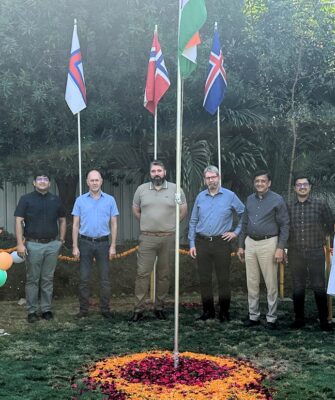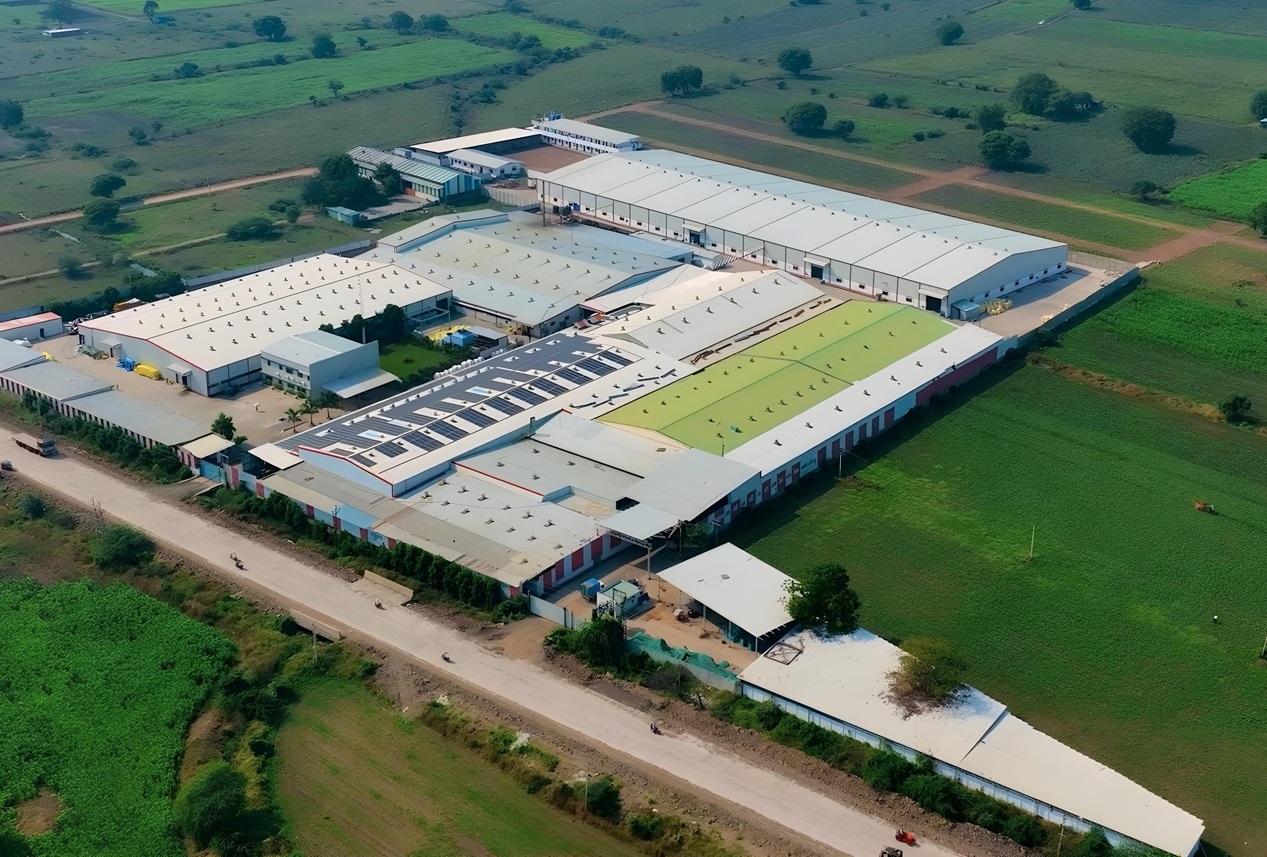On February 7 of this year, Hampiðjan announced its acquisition of a 75.1% stake in the Indian company Kohinoor. The due diligence process—including operational, tax, and legal reviews as well as assessments of environmental matters, social factors, and governance—has now been fully completed. All conditions related to the acquisition have been met, and there are no obstacles remaining for the settlement of the purchase. The settlement aligned closely with the original expectations, and the payment amounted to €21.7 million, which has been received by the seller’s bank. The settlement terms will subsequently be confirmed, and the purchase price will be adjusted based on that confirmation, though no major changes are anticipated.
The financial year for companies in India typically runs from April 1 to March 31. In the agreements, an EBITDA of €3.7 million was used as the basis for determining the purchase price.

Mahesh Baheti, incoming CEO of Kohinoor, Hjálmar Petersen, CEO of Vonin in the Faroe Islands, Emil Viðar Eyþórsson, CFO of Hampiðjan, Hjörtur Erlendsson, CEO of Hampiðjan, Nandkishor Baheti, CEO of Kohinoor, and Chetan Baheti, CFO of Kohinoor.
The acquisition agreements include two performance-based targets that could result in additional payments to the sellers if met. If EBITDA reaches €4.45 million in the financial year 2024–25, which ended on March 31, then an additional payment of €2.07 million will be triggered. At this time, it is unclear whether this target was achieved, and that will only be revealed upon the final review. However, preliminary indications suggest the outcome is close to the target.
The corresponding target for the 2025–26 financial year, ending March 31 of next year, is an EBITDA of €5.52 million, with the same €2.07 million in additional payment attached.
If the target for the previous year is not met but the combined EBITDA over the two financial years exceeds the sum of the two targets, then the full additional payment will still be made for both years.
Thus, the total purchase price could reach €25.8 million, provided that the EBITDA of €5.52 million is met.
As a reminder, Kohinoor is one of the largest manufacturers of nets and ropes in India, with an annual production of around 14,300 tonnes. The company employs just over 700 people and has three operational sites: two net and rope factories in Selu and a net workshop in Jalna. The company also maintains an office in Aurangabad. Kohinoor operates in the Maharashtra region, approximately 375 km east of Mumbai. Transportation is favorable due to the development of new highways connecting Selu and Jalna to Mumbai.
To provide further perspective on the company’s scale: the current factory buildings cover nearly 60,000 m². By comparison, Hampiðjan’s operations in Lithuania also employ around 700 people with a building footprint of about 45,500 m². Following the acquisition of a majority stake in Kohinoor, the total number of employees within the Hampiðjan Group will be about 2,700.
Efforts are currently underway to acquire land in India for further development, with construction planned to begin this spring and the first phase expected to be completed around the New Year. Authorities have pledged 12 hectares of land in the Auric industrial zone, about 20 km east of Aurangabad—a city of approximately 1.7 million inhabitants. The site allows for construction of 60–70,000 m² and is fully equipped with infrastructure, including electricity, water, internet, sewage systems, and paved roads with dual lanes in both directions. A connection to the Mumbai highway lies about 4 km to the north, and once fully opened next year, travel time to Mumbai will be about 3.5 hours.
The initial steps of relocating machinery and production from Lithuania have already begun. The first rope machine is already en route, with another awaiting shipment. As the peak season for aquaculture cage production and related materials winds down in late summer, four knotless net weaving looms will be moved from Norway to Kohinoor. At the same time, specialized sewing machines and other equipment will be transferred from Poland and Lithuania to India.

Braiding machine.
Other efficiency improvements include the relocation of braiding machines and super rope production from Mørenot’s factory in Hildre, Norway, to the super rope division of Hampidjan Baltic, where installation is underway. This optimization takes advantage of lower labor costs and better utilization of equipment that was underused in Norway.
In Denmark, at Mørenot Denmark, staffing has been reduced from twelve to five, with further reductions expected by year-end. Only two international sales managers will remain. The operations previously located in Denmark will be transferred to Norway, where existing facilities and staff can take over these tasks, requiring only additional warehousing personnel in Søvik, north of Ålesund.
These developments mark an exciting period ahead, as India becomes a center for expansion and production relocation—particularly of aquaculture cages—from Norway, Poland, and Lithuania. These changes bring significant efficiency gains due to India’s more favorable operating environment.


